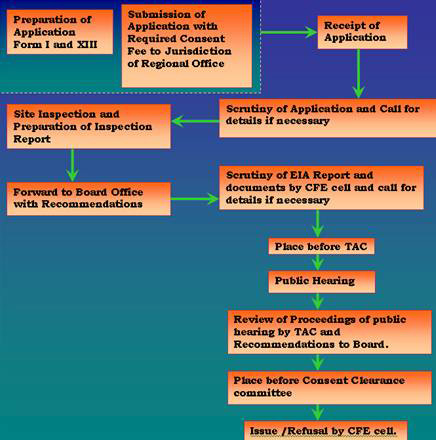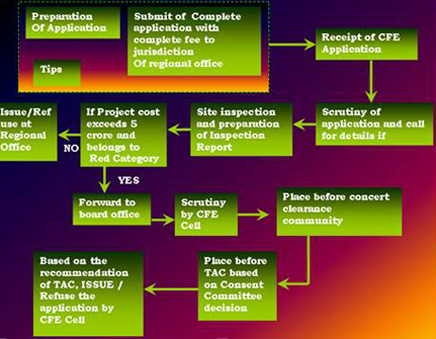Consultation & Guidance
Consultation on Electrical Inspectorate
The Electrical Inspectorate is in the administrative control of Energy Department.
The Department of Electrical Inspectorate is headed by the Chief Electrical Inspector to Government and Ex-officio Additional Secretary to Government (licensing) who is also the Chairman, Licensing Advisory and Examination Board. The State Inspector of Lifts and Chairman Cinema Operators Examination Board are working under the administrative control of Department of Energy.
Objectives
The objectives of the Department of electrical Inspectorate is to implement and administer the several Central and State Acts and the Rules made thereon, connected with electricity, Generation, supply, consumption / utilization, so as to ensure safe working of all the Electrical installations in the State and with a specific intention to minimize danger to the human and animal life in general and working personnel in particular. To have effective implementation and administration of the Acts and the rules connected with electricity, this department conducts initial and periodical inspections of the electrical installations within the State.
Functions
The functions of the electrical Inspectorate in Karnataka state for proper implementation and administration of the following:
- The Indian Electricity Rules 1956.
- The Electricity Act, 1910.
- Karnataka Electricity (Taxation on Consumption) Act, 1959.
- The Karnataka Cinema Act, 1979 and Rules.
- The Karnataka Lifts Act 1974 and Lift Rules, 1976.
- The Karnataka {Licensing of electrical Contractors and grant of Certificates and Permits to Electrical Supervisors and Wireman} Rules 1976.
- Exhibition of Films through Video Cassette Recorder Rules, 1988.
In order to ensure the implementation of the Indian Electricity Act and Rules, the following are the important works carried out by the department.
- Initial and periodical inspection of Electrical installations such as, Factories, KPTCL substations, Generating Stations, and Wind Mills, Thermal Power Plants, consumer Installations, Neon Signs, X-Rays EHV/HV installations, Lifts, Generator sets, multistoried buildings, cinema Installations etc.
- Scrutiny of drawings and to accord approval for electrical installations, KPTCL installations, Consumers EHV/HV installations, Generator Sets, Multistoried buildings and Cinema Installations.
Procedures, Sanctions, Tips & Guidance on Pollution
- Pollution Control Board
- Industries & Entrepreneurs
- Who can Obtain a consent?
Any person who is likely to establish or take any steps to establish any Industrial Plant or process or any treatment and disposal system or any extension or addition which is likely to discharge sewage or trade effluent into any stream or well or sewer or on land has to obtain consent of the Board.
Similarly any person who is likely to establish or operate any industrial plant in any air pollution control area (Entire Karnataka has been declared as air pollution control area) is not permitted to discharge or cause or discharge the emission of any air pollutant in excess of the standards laid down by the State Board. These emissions shall be with prior consent of the State Board.
New Industry
All the entrepreneur’s before establishing an industry have to obtain consent for establishment.(if the industry falls under schedule I of Environment Impact Assessment) EIA
Following information /documents have to be furnished for obtaining consent for establishments
- Prescribed application form I & XIII
- Project report
- Land possession certificate/shed possession.
- EIA & EMP reports ( for industries listed in schedule I of the EIA Notification).
- Water & material balance.
- Location map.
- Proposed pollution control measures for controlling water pollution, solid waste, hazardous waste, Air pollution.
- Layout map.
Consent for existing Industries
Once the industry is established, for operating the same the entrepreneur’s have to apply for consent in prescribed forms under water (Form I) &Air (Form XIII) Act separately along with the following documents:
- Form I and Form XIII,
- Audited balance sheet
- Environmental Statement affidavit in Rs.100 stamp paper
- Prescribed consent fee in the form of DD.
Procedure for Obtaining a Consent
Siting guidelines
Annexure A
Guidelines For Setting Up Of New Industries In Karnataka State
- No new industry listed in ANNEXURE - I shall be permitted to be established within 1.5 k.m. from the embankment of the streams, rivers, dams as indicated in ANNEXURE - II. If any of these water bodies are the source of drinking water, then such distance shall be stipulated which will not affect such waters by discharge of the pollutants.
- No new Large / Medium / Small (Red & Orange Category) industry generating effluents, and or emissions shall be permitted within city / municipal limits and residential areas.
- The Karnataka Industrial Area Development Board (KIADB) or any other agency developing industrial area shall obtain Environmental clearance from the Department of Ecology and environment and clearance from the Karnataka State Pollution Control Board before establishing such area. Environmental Impact Assessment (EIA) and Environmental Management Plan (EMP) reports shall be submitted to the Karnataka State Pollution Control Board and obtain approval.
Distance for establishing new industries specified in ANNEXURE - I in certain special category areas shall be as follows : -
- Ecologically and/or otherwise sensitive areas - At least 25 kms., depending on the geo-climatic conditions, the requisite distance shall have to be increased by the appropriate agency.
- Coastal Areas - At least 1/2 km. from high tide line. The stipulations made by Ministry of Environment &forests Government of India in its vide Notification No. S0 114(E), dated 19.02.1991, by Government of India, Ministry of Environment and Forests, issued under the Environment (Protection) Rules, 1986, shall be strictly adhered to.
- Transport / Communication System - At least 1/2 km. from National &State High-ways and railway line.
- Major Settlements (3,00,000 Population) - Appropriate distance for establishment of major industries around the cities having more than 3,00,000 population shall be prescribed by Karnataka State Pollution Control Board. Wherever these distance cannot be maintained and at the same time it is inevitable to locate the industry, measures for prevention of pollution due to effluents, noise, emissions, odour etc., shall be insisted by the Board
NOTE : Ecological and / or otherwise sensitive areas include
- Religious and Historic Places
- Archeological Monuments
- Scenic Areas
- Hill Resorts
- Beach Resorts & Health Resorts
- Coastal Areas rich in Mangroves, Breeding Grounds of Specific Species
- Estuaries rich in Mangroves, Breeding Grounds of Specific Species
- Biosphere Reserves
- National Parks and Sanctuaries
- Natural Lakes, Swamps
- Seismic Zones
- Tribal Settlements
- Areas of Scientific and Geological Interest
- Defence Installations, specially those of security importance and sensitive to pollution
- Air Ports
- No forest land shall be converted into non-forest activity for the sustenance of the industry.
- Land acquired shall be sufficiently large to provide for appropriate treatment of waste water still left for treatment after maximum possible reuse and recycle. Reclaimed (treated waste) water shall be used to raise green belt and to create water body for aesthetics, recreation and if possible for aquaculture. The green belt shall be sufficiently wide around the boundary limit of the industry. For industry having odour problem, it shall be minimum of 30mtrs. wide.
- Enough space should be provided for storage of solid waste, so that the same could be available for possible reuse.
Consent For Establishment (CFE)
- Projects attracting EIA Notification. (With EIA)

- Projects not attracting EIA Notification. (Without EIA)

Tips
- 20 copy of Executive Summary
- 15 copy EIA Report and Form I & Form XIII
- Topper Sheet Extract
- Detailed Project Report
- Clearance of High level Committee.
Note: For Review of Refused CFE application at Regional Office level will be discussed in the State level Consent Committee at Central Office, only if the Project Authority approaches the Board for Review.
Guidance
Steps to determine Generator requirements and we will help you the following way:
- Your need determined.
- Right information and guidelines in regard to the generator if it should operate part or all of your home or office?
- Study about the appliances and/or tools the generator will need to power.
- Determine the wattage for each appliance and tool you plan to use frequently.
The "Common Wattage Guide" below will help you determine your need.
- Total the wattage for appliances and tools you frequently use.
- Identify motor and pump requirements. Use the motor and pump charts provided below.
- Calculate and total the wattage for the motors and pumps frequently used.
- Always use starting watts, not running watts, when determining the correct electrical load requirements.
- Total the wattage of the appliances &tools and the motors &pumps.
- For emergency use you don’t necessarily need to size the generator to operate everything simultaneously. Remember that when you coordinate your power usage wisely you do not have to operate everything all at once.
- Convert watts into kilowatts by dividing the watts in step VI to determine the generator size
- required.
Please note that it is suggested, although not absolutely necessary, to size the generator 20-25% over the size you determine your needs to be. This will allow enough space for future growth. For example, if you determine that you will need a 15kW generator then it is advisable to purchase an 18kW generator to accommodate future expansion.





